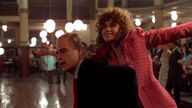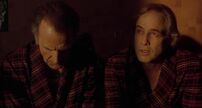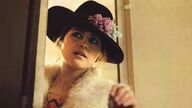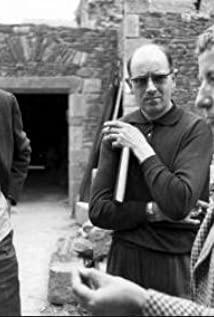Another cut-in point of view is to criticize the "human alienation" of capitalist society. In the film, the director gave the definition of "love" through the heroine's mouth: "Two people go to a secret place, take off their work clothes, become men and women again, and then make love." In this line, "work clothes" It symbolizes the identity given to individuals by capitalist society. It requires everyone to shape themselves according to the identity. Therefore, under the coercion of the identity, people lose their humanity and become false. "Sex" has become one of the means to recall humanity. "Love" is not based on "work clothes", it is based on human nature. However, this view also has its flaws: it fails to explain the separation of the heroine and the hero, and ultimately kills the hero—and their relationship ends up reaching a dead end.
Combining the two viewpoints, what I understand from Bertolucci's film is a comprehensive reflection on the relationship between human nature and love in modern people: it hopes to resist an increasingly alienated society by calling on human nature, and it worries about Excessive excess of freedom (including "sexual freedom") leads to people's disorientation.
In "Last Tango in Paris," Bertolucci also experimented with film narratives in various ways. The plot of the heroine's boyfriend in the film has a strong "Chinese box" flavor - a big box over a small box. The use of this technique seems to remind the audience to focus on the film narrative itself, that is, to remind the audience to pay attention to how the film is told rather than what it is.
"Parody" is an important narrative method used in films. In the section describing the bathtub where the male protagonist saw his wife committing suicide, the director handled the plot with a strong suspense detective style. From this point, it can also be said that the film has a hodgepodge of properties - a fusion of detective films, suspense films and ethical films.
In the film, the director and his skillful use of "voice-over" as the link of the plot and the reason for the change in the protagonist's heart: when the male protagonist is in the bathroom, the film sounds the sound of the saxophone, but the saxophone does not appear in the film screen. . Soon, following the sound, the footage of the movie walked out the window and into another house. There, a black man was playing the saxophone, while his wife was fixing his pants, apparently the couple was very loving. This undoubtedly stimulated the male protagonist who was troubled by marriage and deepened his inner grief. And his inner grief turned into his desire to numb himself with "sex".
Perhaps the most stunning scene is when the hero is shot by the heroine, sticking his chewing gum to the balcony railing. The shot appears strange and puzzling. I think this is precisely the director's intentional arrangement. He hopes that through this unrelated scene, the audience who is deeply involved in the film can be separated from the film and think about the ideological connotation that the film wants to express. In Brecht's theory, this shot should be called "distancing".
View more about Last Tango in Paris reviews











